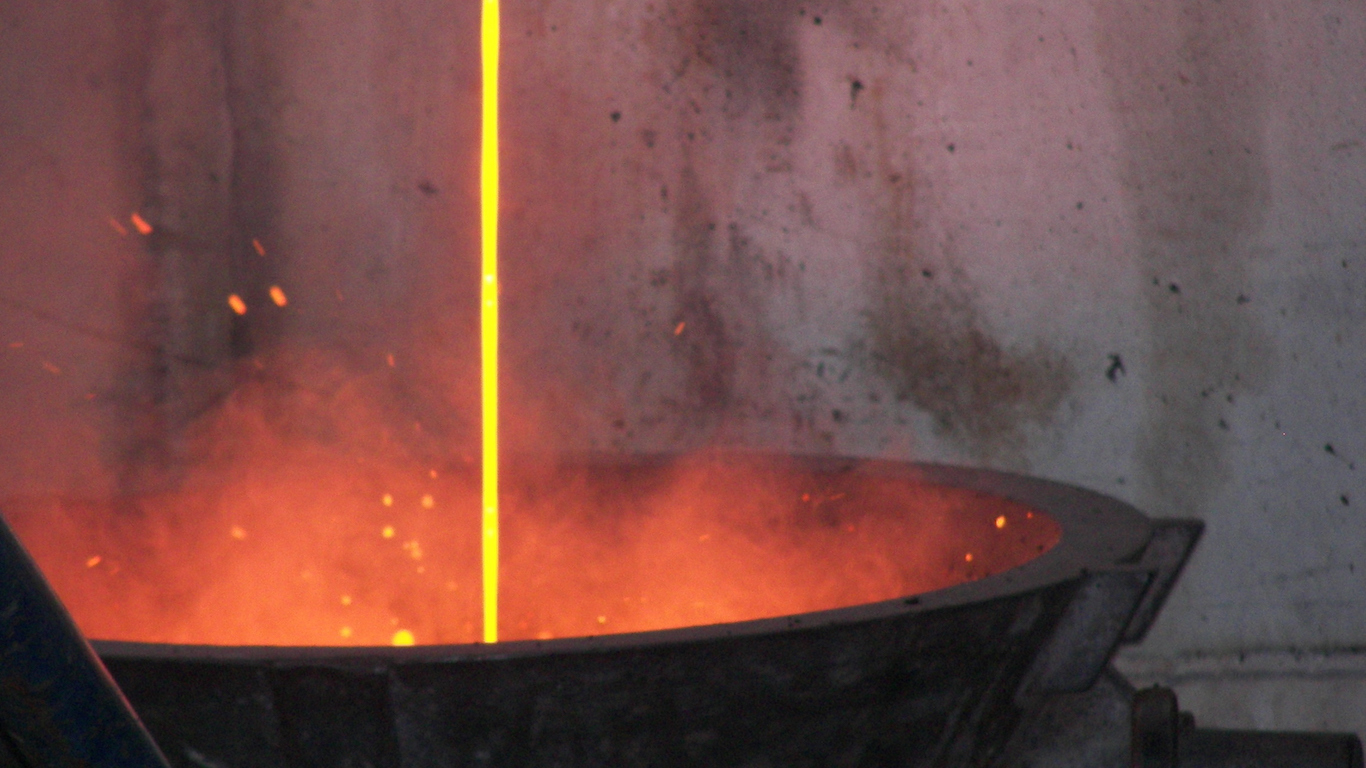Commodities & Metals
Could There Be More Merger Action in the World's Gold Fields?

Published:
Last Updated:

Monday’s announced merger between Barrick Gold Corp. (NYSE: ABX) and Randgold Resources Ltd. (NASDAQ: GOLD) emphasized the quality of the merged company’s reserves, the further reduction in costs and shareholder returns. With gold prices stuck in a relatively narrow range around $1,200, and restive investors who were unhappy with losses, gold miners shifted their strategies to emphasize return on investment rather the expansion regime of eight to 10 years ago. That has meant cutting costs to make a profit at lower prices.
Gold reached its highest price ever just seven years ago. At around $1,900 an ounce, the yellow metal’s price had been driven up by demand for a safe haven during the financial crisis. Then, as the global economy (or at least the global financial system) began to recover, the price of gold dipped to around $1,550 in June of 2012 before rising to near $1,800 again in September. Since then, it has posted a low of under $1,100 in late 2015 and climbed back to around $1,200.
As recently as four years ago, mergers between the mining giants were still being bandied about. The world’s two largest gold producers, Barrick and Newmont Mining Corp. (NYSE: NEM), had talked about a possible merger in 2014 and again in 2015, but any chance of a deal died when Newmont acquired a Colorado mine from AngloGold Ashanti Ltd. (NYSE: AU) in June of that year. Mega-deals between gold miners have been taken off the table.
What about more deals like the one between Barrick and Randgold? With Barrick and, likely, Newmont out of acquisition mode for a while, that leaves Freeport-McMoRan Inc. (NYSE: FCX) and Franco-Nevada Corp. (NYSE: FNV) with a market cap near $12 billion, Goldcorp Inc. (NYSE: GG) with a market cap of around $9.3 billion and Agnico Eagle Mines Ltd. (NYSE: AEM) with a market cap of around $8.1 billion as potential acquirers.
Freeport is an unlikely acquirer given its focus on its Grasberg copper mine in Indonesia and Franco-Nevada is a royalty stream firm that recently invested in oil production royalties in Oklahoma. That leaves Goldcorp and Agnico Eagle.
Goldcorp’s balance sheet is long on long-term debt ($2.175 billion) and short on cash and short-term investments ($159 million). Agnico Eagle is in somewhat better shape, with cash and short-term investments of around $795 million and long-term debt of $1.72 billion. Both trade nearer their 52-week lows than their highs, however, and Agnico Eagle’s forward price-to-earnings (P/E) ratio is 43.67. To our eye, neither is automatically excluded from making an acquisition, but neither is a good prospect.
Which companies might be the best targets? Here are some possibilities.
Kinross Gold Corp. (NYSE: KGC) has a market cap of $3.78 billion and traded Monday morning at $2.99, in a 52-week range of $2.67 to $4.78. Shares have lost nearly a third in the past 12 months, and the forward P/E ratio is 19.97. Kinross is based in Canada and has assets in Canada, the United States, Russia, Brazil, Chile, Ghana and Mauritania.
Yamana Gold Inc. (NYSE: AUY) has a market cap of $2.44 billion and traded at $2.58 this morning, in a 52-week range of $2.30 to $3.80. Shares have dropped 11.7% in the past 12 months, and the forward P/E ratio is 13.55. Yamana is based in Canada and has assets in Canada, Brazil, Chile and Argentina.
Iamgold Corp. (NYSE: IAG) has a market cap of $1.89 billion and traded at $4.06, in a range of $3.57 to $6.73. Shares have dropped nearly 40% over the past 12 months, and the forward P/E ratio is 29. The company is based in Canada and has assets in South America, Africa and Canada.
Harmony Gold Mining Co. Ltd. (NYSE: HMY) has a market cap of around $1 billion and traded this morning at $1.90, in a 52-week range of $1.43 to $2.53. Shares are down 4.1% for the past 12 months, and the company posted an operating loss of around $265,000. The company is based in South Africa and owns assets in South Africa and Papua New Guinea.
Anything’s possible, of course, but with very low valuations and relatively rich forward earnings projections, our guess is that gold miners are going to muddle along in second-gear for a while longer. Building up asset reserves is still too costly given the low prices for the yellow metal, and investors are sure to balk at anything that threatens already paltry returns.
The last few years made people forget how much banks and CD’s can pay. Meanwhile, interest rates have spiked and many can afford to pay you much more, but most are keeping yields low and hoping you won’t notice.
But there is good news. To win qualified customers, some accounts are paying almost 10x the national average! That’s an incredible way to keep your money safe and earn more at the same time. Our top pick for high yield savings accounts includes other benefits as well. You can earn up to 3.80% with a Checking & Savings Account today Sign up and get up to $300 with direct deposit. No account fees. FDIC Insured.
Click here to see how much more you could be earning on your savings today. It takes just a few minutes to open an account to make your money work for you.
Thank you for reading! Have some feedback for us?
Contact the 24/7 Wall St. editorial team.